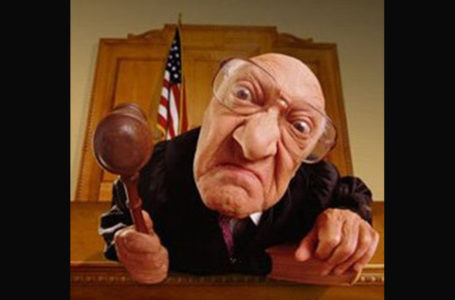Perez Hilton’s lawyers are looking to unravel an international plot to force big media companies like Huffington Post, MTV, Gawker and Conde Nast to pay up over a photo of Kate Moss’ younger sister.
Three years ago, an upstart company named Righthaven purported to acquire the rights to several newspaper articles and images for the express purpose of suing copyright infringers on the Internet. The ambitions of the company unraveled after judges figured out that the company wasn’t really a copyright owner. But up until that moment, Righthaven had launched more than 250 lawsuits against mom-and-pop Web publishers.
Now imagine an operation that decided that instead of going after the small fish, it would be better to target the biggest media lobsters. Attorneys for blogger Perez Hilton believe they have stumbled upon such a venture, which they say “appears to be well funded, sophisticated, extremely aggressive, and successful in its volume business model of bringing in quick settlements.”
At issue are “leaked” photos of Charlotte “Lottie” Moss, the teenage half-sister of supermodel Kate Moss. Among the media organizations that published the photos and were then hit with threats were Huffington Post, InStyle, Vogue Italy, Elle, Harpers Bazaar, Glamour France, MTV online, Gawker, Conde Nast, Newsweek and New York Magazine online. The cease-and-desist letters and lawsuits are reported to have earned the venture over $325,000 in settlement money.
Now, Hilton’s lawyers, including Bryan Freedman and Jesse Kaplan at Freedman & Taitelman, are looking to unravel the plot, and The Hollywood Reporter has obtained internal documents that show the workings of this outfit.
At the center of this story is a photographer named Andrea Carter-Bowman, who in 2011 is said to have been given the privilege of shooting Lottie Moss, then 14 years old. The secret test shoot was arranged by Moss’ modeling agency, Storm Model Management, and a one-page agreement at the time of the photo session stated that “the photographer may not assign copyright in the images nor exploit the copyright, nor grant license to exploit it. For the avoidance of doubt, there will be no usage of any imagery from the shoot … unless negotiated and agreed in advance in writing with Storm.”
Nevertheless, Carter-Bowman is described in new court papers as having later approached Storm about reconsidering its unwillingness to release the images, and when Storm refused (there were concerns, among other things, that Moss was a minor), the photographer “leaked” the photos to acquaintances in the fashion world. For instance, in early November, 2011 Carter-Bowman e-mailed the photography director at Teen Vogue, the picture editor at Look Magazine and others in a message titled “Introducing Lottie Moss (Kate’s Little Sister) EXCLUSIVE IMAGERY,” with the images attached.
Soon, the photos of would-be supermodel Lottie Moss were appearing everywhere online.
Even though Carter-Bowman allegedly was told that she couldn’t market the Moss photographs, her photo syndication agency of Lickerish is described by Hilton’s attorneys as having “strategized to artfully circumvent the absolute restrictions,” discussing “how to dupe several high-profile media publications into believing that Carter-Bowman lost out on exclusive licensing fees.”
To do that, Storm Model Management would have to be pushed aside.
In one email sent by a Lickerish staff member, Carter-Bowman was advised to tell Storm not to contact any of the websites that had put up the leaked image. The email adds, “Obviously we are going to concentrate on businesses, as we can get a lot of money out from them, but if storm just ask[s] them to remove it becomes more difficult to get money from them.”
Attorneys were subsequently hired around the globe. A compensation structure was set up. For example, in the U.S., hired attorneys were given a retainer fee to send out cease-and-desists, a certain percent of any settlement money if they had to file a lawsuit, and a certain larger percentage if the lawsuit was contested.
Carter-Bowman’s team also worked with a company called ImageRights, described by Hilton’s attorneys as an outfit “that specializes [in] trolling the internet to identify supposedly unauthorized uses of photographs and recovering settlements based on such unauthorized use.” It’s also a company that appears from documents obtained by THR to be working with other litigious entities such as paparazzi agency Mavrix, responsible for dozens of other lawsuits against media companies over published photos of Beyonce, Katy Perry and other celebrities.
As for the Moss photos, an executive at ImageRights would soon brag in an email that “we have lawsuits under way in six countries in less than four weeks since the leak, with China, Australia, U.K. and Canada coming soon.”
Carter-Bowman’s team carefully calibrated which media companies would be the best targets. A list of big media sites that had used the image was made.
“Please be aware that we are intending to settle all cases, if possible, amicably and with a settlement, as we do not want to damage any of our working relationships with these clients,” wrote a director at Lickerish in an email. She added, “Finally, as you are aware, websites that are not businesses but created by joe blog from his bedroom are impossible to get a settlement from. We will not be pursuing these websites legally, as the lawyers work on a mainly commission basis.”
In 2012, three lawsuits in the United States were filed by Carter-Bowman. One was filed against Perez Hilton, another against AOL/Huffington Post and a third against the Abrams Media Network, publisher of Mediate.com and Styleite.com. The latter online publishing company was founded by Dan Abrams, who was just named the new anchor on ABC’s Nightline. This past March, another ongoing lawsuit was filed against BuzzMedia (now Spin Media), publisher of Spin, Stereogum, Celebuzz and other entertainment sites.
When that lawsuit against Abrams’ company was filed, we wrote about it here, and contacted both sides.
Being approached by The Hollywood Reporter led to internal discussions by members of the Carter-Bowman team. An executive at ImageRights relayed to the team that the “primary concern” from one of their lawyers was that “they don’t want to appear to be copyright trolls if word gets out that there are a bunch of lawsuits being filed on the same set of photos.”
The legal campaign appears to have had some success. Perez Hilton’s attorneys say that through discovery it’s been revealed that Carter-Bowman has recovered, in settlements, more than $325,000 — and $222,500 of that comes in the United States. Abrams was one of the targets who paid up to make the claims go away. Other media outlets, such as Newsweek/Daily Beast, MTV and Elle first raised fair use defenses. When one N.Y. media company paid $30,000 to settle in what a member of Carter-Bowman’s team termed to be a “last-minute Christmas present,” the photographer was to get a $8,450 share, Lickerish $16,900, ImageRights $9,100 and the lawyers $4,000.
The Perez Hilton lawsuit is still ongoing, and the blogger’s attorneys are attempting to force Carter-Bowman, a U.K. citizen, to show up for a deposition in California. They say her “credibility is in question,” and wish to examine whether she was responsible for the “leak” of the Moss images, whether she circulated those images contrary to her obligations with Storm, whether the $325,000 received has been a “windfall” that “greatly exceeds any amount she could ever earned,” whether she misled Storm and why the media outlets who reported the images weren’t entitled to “fair use.” (Carter-Bowman and Lickerish have been contacted by THR. They had no immediate comment, but we’ll update if we hear anything more from them.)
Hilton’s lawyers also appear to be gearing up to make a challenge to Carter-Bowman’s copyright claims on standings grounds: Either she doesn’t really have rights to the images or if she does, she can’t possibly claim harm to herself.
Earlier this year, in the Righthaven case, the Ninth Circuit Court of Appeals noted that “Abraham Lincoln told a story about a lawyer who tried to establish that a calf had five legs by calling its tail a leg. But the calf had only four legs, Lincoln observed, because calling a tail a leg does not make it so … Heeding Lincoln’s wisdom, and the requirements of the Copyright Act, we conclude that merely calling someone a copyright owner does not make it so.”
Joe Naylor, co-founder and CEO of ImageRights responds, “Perez Hilton and others with a history of mass infringement complain about ImageRights. That doesn’t bother us. Maybe the biggest threat to photographers and photo agencies is the rampant copyright infringement on the internet, and most photographers do not have the resources or legal sophistication to fight infringers on their own. These photographers pour blood, sweat and tears into their craft, only to see their works exploited without permission, and they are thrilled that we’re here to help. We’re more interested in the opinions of those clients than we are the complaints of people who build a business model around stealing other people’s works.”
E-mail: Eriq.Gardner@THR.com
Twitter: @eriqgardner




![Vin Diesel speaking at the 2013 San Diego Comic Con International, for “Riddick”, at the San Diego Convention Center in San Diego, California. Photo by Gage Skidmore (Vin DieselUploaded by Dudek1337) [CC BY-SA 2.0], via Wikimedia Commons.](https://ftllp.com/wp-content/uploads/2017/05/16-9-Vin_Diesel_by_Gage_Skidmore-961x360-455x300.jpg)
